The firing correction program allows you to quickly launch an artillery strike on a detected target.
The troops are now actively implementing advanced systems that facilitate the work of our soldiers on the front line. At the training ground of the tank division of the Center group of forces, soldiers are mastering the latest software package "Eye/A thunderstorm." It allows UAV operators to transmit the coordinates of targets to tank crews, artillery or mortar crews. Another novelty is being developed nearby — the ground-based robotic combat platform NRTK Courier with various types of weapons.
Fast and accurate
We managed to get acquainted with the latest innovations at the training ground of one of the tank units of the Center group of forces. First of all, the fighters show the work of the latest software complex "Eye/Thunderstorm" to adjust artillery and mortar fire.
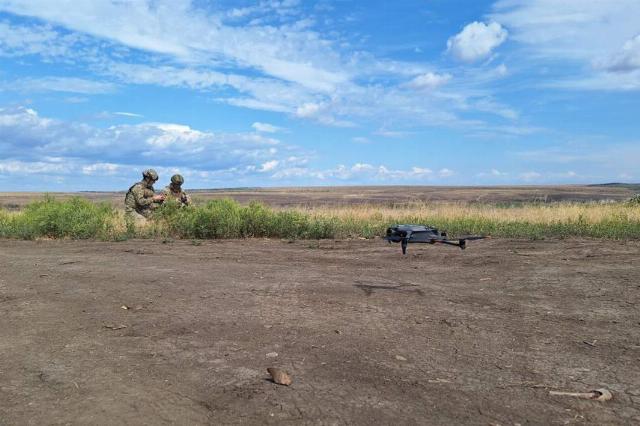
Photo: IZVESTIA/Dmitry Astrakhan
Image source: iz.ru
Outwardly, everything looks ordinary: the operator lifts the Mavik quadcopter into the air for reconnaissance and correction.
However, next to it is the second calculation number with an electronic tablet in which the "Eye" application is installed./A thunderstorm." It allows UAV operators to interact directly with mortar crews, artillery guns, and tank crews.
"The new software allows you to quickly transmit coordinates, which means you can practice on detected targets," explains Nikita Kuznetsov, commander of the UAV squad with the call sign Strepet. — The drone operator displays real work with a Mavic-type quadcopter on the screen of his remote control. He watches, puts goals on the map, which immediately appear and are displayed on my screen. I'm already handing them over to the trunk calculation.
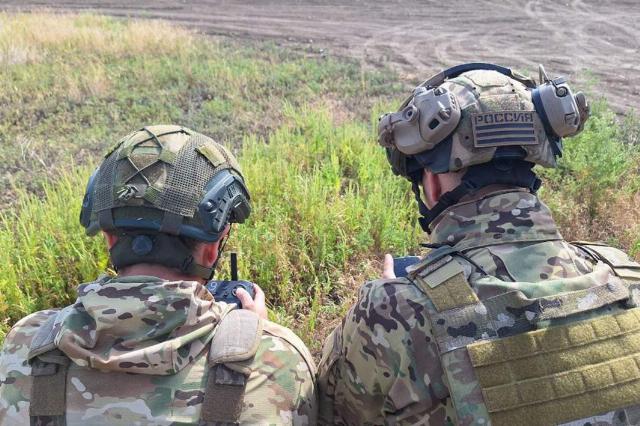
Photo: IZVESTIA/Dmitry Astrakhan
Image source: iz.ru
Previously, these actions were performed by eye. Scouts and observers were linked to the terrain by landmarks and determined distances, dictated radio data to artillery officers, and the gun crew waited for firing data.
In addition, for the convenience of communication, the application has a chat and direct communication, which the enemy not only cannot silence with electronic warfare, but also intercept.
But the main thing, of course, is not the convenience of the interface, but the automation of mathematical calculations for shooting and adjustments between shots.

Photo: IZVESTIA/Dmitry Astrakhan
Image source: iz.ru
The platoon commander of the mortar battery, Junior Lieutenant Gennady Dryagin, shows on his tablet that after a sighting shot, he sees both the target and the real gap on the map, as well as tables of necessary corrections, which he transmits to the calculation of the gun.
"You immediately get an image on the map, and the sight and angle gauge have already been calculated — this speeds up the work by 50%," explains Gennady and dictates a new sight from the tablet to the calculation of the 120-mm mortar.
Currently, mortars continue to work with optical sights, so guidance and guidance recovery are performed manually.

Photo: IZVESTIA/Dmitry Astrakhan
Image source: iz.ru
In the future, the guns themselves can also be equipped with sensors and their coordinates can be linked in the new information system, so that, in addition to the calculated ones, they can also have real data on the location and actual position of the guns.
Smart Courier
Ground—based tracked robotic complexes NRTK Courier, products that have already participated in battles, are operating nearby at the firing line. They are now being implemented in the Center group.
These machines have several important differences from semi-artisanal products of regimental and brigade workshops. First of all, it is a controlled armament bed on which one or another weapon can be installed — a large-caliber machine gun, a PKT machine gun or an AGS automatic grenade launcher.
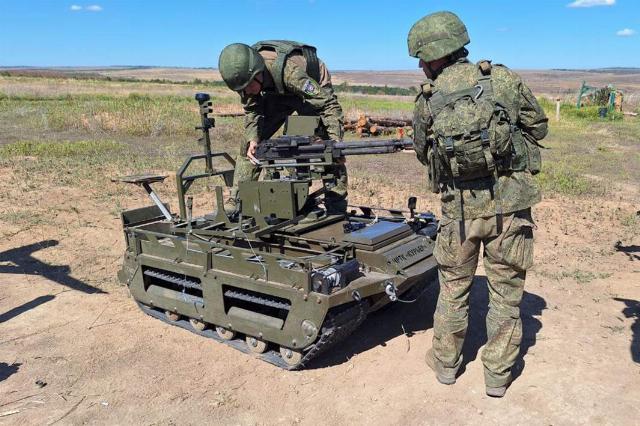
Photo: IZVESTIA/Dmitry Astrakhan
Image Source: iz.ru
Users are especially inspired by the latest opportunity — it is very risky to use automatic grenade launchers in modern conditions. Calculations are at great risk. A robot is much more likely to strike and escape unharmed than a fighter.
— The most effective way was to take a firing position where the enemy would not expect us, some bushes in the field, — says company commander Albert Feiskhanov. — Even if this position is in a low-lying area, the AGS will inflict fire damage on both manpower and lightly armored vehicles.

Photo: IZVESTIA/Dmitry Astrakhan
Image source: iz.ru
The Courier can also be used to transport ammunition and other goods in the immediate rear.
— Today it is one of the most risky and difficult operations, — he explains.
According to the fighters, there are other applications for the new machine. Given that the control is carried out via satellite Internet, and the robot can carry 10 anti-tank mines, it can be used to set up obstacles behind enemy lines. A robot with a machine gun and large ammunition can also be used for ambush operations.
— The bed on which the armament is installed rotates 90 degrees, — Albert Feiskhanov shows. — Plus it moves up and down, which allows you to raise and lower the barrel. The turning speed is also adjustable. All this is done on a computer," Albert continues to introduce the robot.

Photo: IZVESTIA/Dmitry Astrakhan
Image source: iz.ru
The sighting system includes both a high-magnification camera and a thermal imager. This allows you to detect targets at a great distance, even with camouflage.
The problem of the reserve of autonomy is solved not only by high-capacity batteries, but also by a generator. When the batteries are low, it, together with the inverter, can provide several more hours of operation of the complex, or charge the main batteries if there is no electricity in the positions.
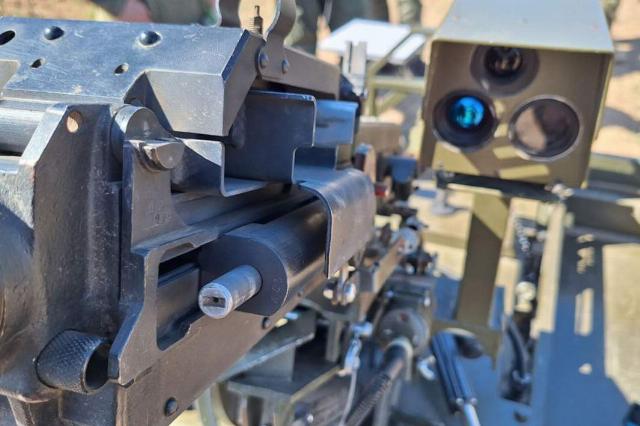
Photo: IZVESTIA/Dmitry Astrakhan
Image source: iz.ru
The commanders say that today the tactics of land-based robotic platforms are only being created. People are gaining experience, and almost every unit is conducting its own experiments on the possibilities of combat use: from "cheeky" mining to direct assault.
Round by round, the robot practices the use of various weapons at the training ground. Near the control panels, military personnel discuss various options for its use and recall various cases that those present encountered in combat practice.
Someone suggests using a robot to escort infantry with electronic warfare or some kind of anti-aircraft weapon to protect stormtroopers from kamikazes. Nearby, they are considering the idea that such robots can quickly approach captured Ukrainian positions, seriously strengthening the reinforcement groups and meeting counterattacks with heavy machine gun fire with powerful optics.
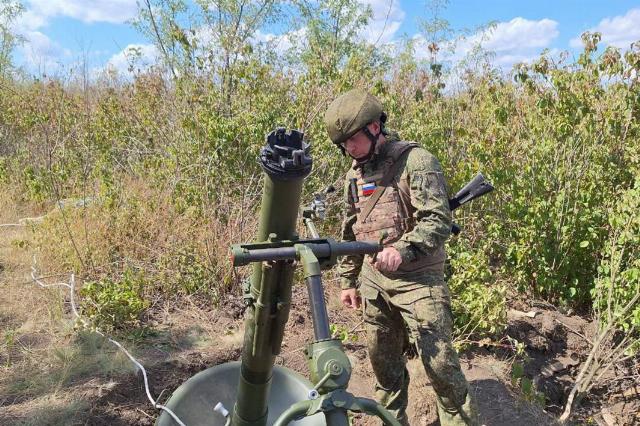
Photo: IZVESTIA/Dmitry Astrakhan
Image source: iz.ru
Drone warfare is changing every day, and some tactics can only be used once, while others remain effective for years, the warriors agree.
The Technology Race
During the transition to NATO standards, the Armed Forces of Ukraine have implemented software management systems at various levels. The most famous of them is "Nettle". It is a localization of similar NATO control systems and is fully compatible with them.
Later, during the Ukrainian "counteroffensive" of 2023, in many enemy combat vehicles, our fighters seized electronic tablets that provided information exchange to the level of platoons or groups.
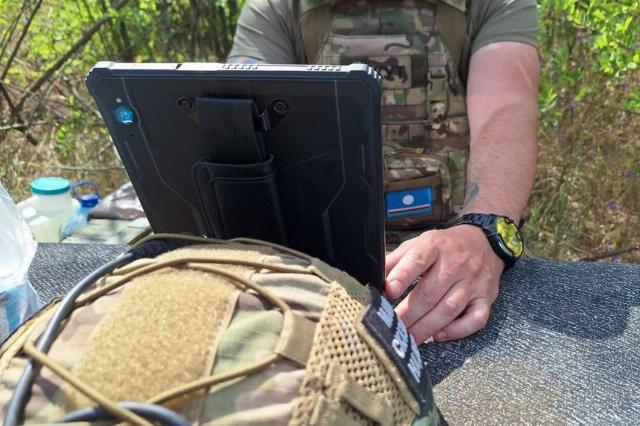
Photo: IZVESTIA/Dmitry Astrakhan
Image source: iz.ru
After the change of presidents in the United States, a series of confessions began in the Western press about the role of American servicemen in controlling Ukrainian militants. In particular, there were descriptions of several episodes in which the headquarters located in Europe received information about the actions of the Ukrainian Armed Forces online, and the American general controlled the fire of the M777 howitzer with the Ukrainian calculation. It was not just about transmitting a "picture", but about exchanging data, up to and including distributing goals. Russia is currently engaged in its own developments, which are actively being implemented in the army. And, as we can see, the process is going well.
Dmitry Astrakhan

